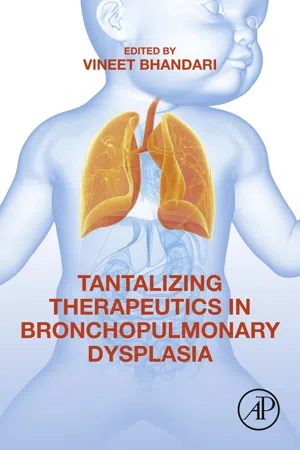Introduction
“Pity poor King Tantalus of Phrygia. The mythic monarch offended the ancient Greek gods. As punishment, he was plunged up to his chin in water in Hades, where he had to stand beneath overhanging boughs of a tree heavily laden with ripe, juicy fruit. But though he was always hungry and thirsty, Tantalus could neither drink the water nor eat the fruit. Anytime he reached for them, they would retreat from him. Our word tantalize is taken from the name of the eternally tormented king.” (https://www.merriam-webster.com/dictionary/tantalize).
Bronchopulmonary dysplasia (BPD) is the most common morbidity of extreme prematurity, and the diagnosis has increased in prevalence over time, in contrast to most other major morbidities in this population [1,2]. Glucocorticoids have been a ‘tantalizing therapeutic’ for prevention and treatment of BPD for over 30 years, in the classic sense of the word, to “torment or tease (someone) with the sight or promise of something that is unobtainable. (https://en.oxforddictionaries.com/definition/tantalize)”. In this chapter, we will review the current evidence for benefits and hazards of both systemic and topical (inhaled and instilled) glucocorticoid therapy. Because cohort studies of therapeutic interventions are confounded by the ‘unknown unknowns’, this chapter will primarily focus on randomized clinical trials (RCTs) of dexamethasone and hydrocortisone.
Dexamethasone
Although one very small RCT in the early 1970s examined the effects of high-dose hydrocortisone (15 mg/kg×2) on acute respiratory distress syndrome (RDS) [3], the glucocorticoid predominantly studied for prevention or treatment of BPD has historically been dexamethasone. Why dexamethasone? Authors of the first published RCT chose it “because of its nearly complete glucocorticoid activity and its long half-life, and because there is reasonable experience with its use in neonates and children” [4]. And why an initial dose of 0.5 mg/kg/day? The answer to that question is less clear, but subsequent studies were perhaps influenced by an improved response of two babies to 0.5 mg/kg/day compared to a dose of 0.1 mg/kg/day in the first published RCT [4,5]. Although dexamethasone is described in various textbooks as 25–40 times more potent than hydrocortisone (HC), studies have shown that it is actually closer to 80 times more potent in suppressing the adrenal axis [6]. Thus, a dose of 0.5 mg/kg/day represents a very high glucocorticoid exposure, especially over the prolonged courses used in many studies [7,8]. Many studies of lower dexamethasone doses, alternative therapeutic agents, and topical administration of glucocorticoids by aerosol or instillation were prompted by the recognition of adverse effects resulting from the higher dose initially studied.
Randomized clinical trials (RCTs) of dexamethasone for established BPD were first reported in the 1980's. Initially, the drug looked like a major step forward in neonatal care, improving oxygenation, facilitating extubation, reducing the need for invasive ventilation at 28 days of postnatal age, and decreasing the incidence of BPD at 36 weeks post menstrual age (PMA) [4,5,7]. Short-term benefits led to widespread clinical use and to studies of earlier treatment, eventually starting on the first postnatal day [8–10]. These subsequent RCTs produced evidence documenting numerous short- and long-term adverse effects, such as hyperglycemia, hypertension, gastrointestinal perforation, growth delay, cardiac hypertrophy, and late-onset sepsis, among others; but most worrisome was a dawning awareness of its impairment of long-term growth and neurodevelopment [8,11,12]. In a meta-analysis in 2001, Barrington concluded that “Postnatal steroid therapy is associated with an increase in cerebral palsy and neurodevelopmental impairment. As there is no clear evidence in the literature of long term benefit, their use for this indication should be abandoned.” [11]. Subsequently, in some of the most compelling evidence of the hazards of high-dose dexamethasone, Yeh et al. reported school age outcomes of children treated with a 28-day course of dexamethasone beginning with a dose of 0.5 mg/kg/day on the first postnatal day [12,13]. They found that dexamethasone-treated children were significantly shorter than the controls and had a significantly smaller head circumference. In addition, they had poorer motor skills, lower IQ scores, and a higher incidence of significant disabilities [12]. Finally, a small study reported that dexamethasone was associated with acutely reduced motility and changes in the speed and amplitude of general movements, markers of brain lesions, and subsequent cerebral palsy [14].
As negative reports accumulated and the American Academy of Pediatrics cautioned against the use of glucocorticoids in 2002 [13], its use decreased markedly, while BPD increased significantly [15–17]. Unfortunately, this reduction in dexamethasone use did not result in the hoped-for improvement in neurodevelopmental outcomes [17], likely at least in part because BPD is also a risk factor for adverse neurodevelopmental outcomes [18,19]. In an unfortunate side effect, clinical trials of lower-dose dexamethasone for prevention or treatment of BPD came to a halt, as clinicians became reluctant to enroll patients [20,21]. The last patients included in a published RCT of dexamethasone to prevent or decrease BPD were enrolled by 2002. Consequently, guidance from meta-analysis of these studies has not changed since then: analyzing 32 RCTs of glucocorticoids begun in in the first postnatal week (21 using dexamethasone), the 2017 Cochrane review concluded that: “Benefits of early postnatal corticosteroid treatment (≤7 days), particularly dexamethasone, may not outweigh adverse effects associated with this treatment.” Further, “subgroup analyses by type of corticosteroid revealed that most of the beneficial and harmful effects of treatment were attributable to dexamethasone” [22]. And after reviewing 21 RCTs of treatment started after the first postnatal week, “evidence showing both benefits and harms of treatment and limitations of available evidence suggests that it may be prudent to reserve the use of late corticosteroids for infants who cannot be weaned from mechanical ventilation, and to minim...
